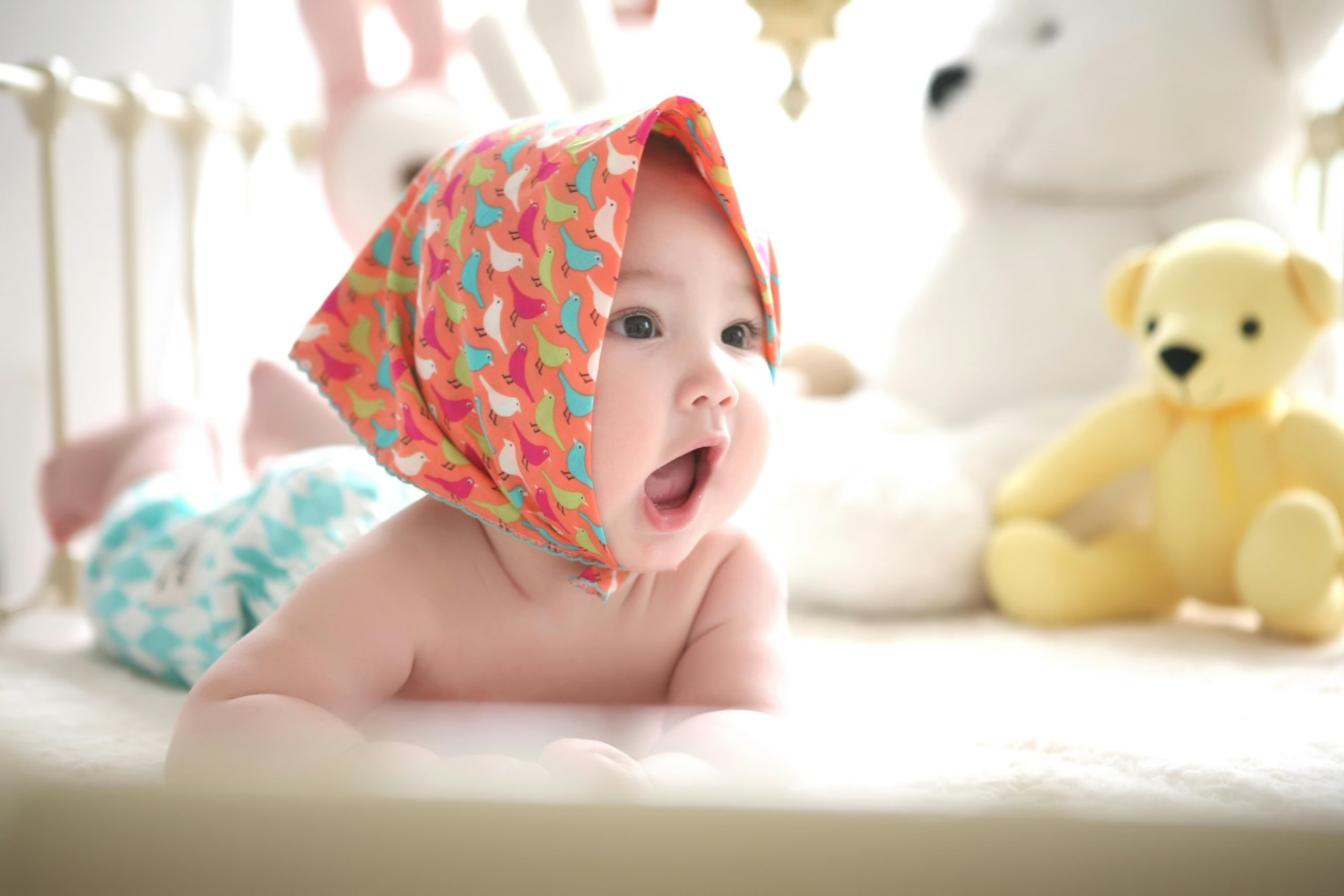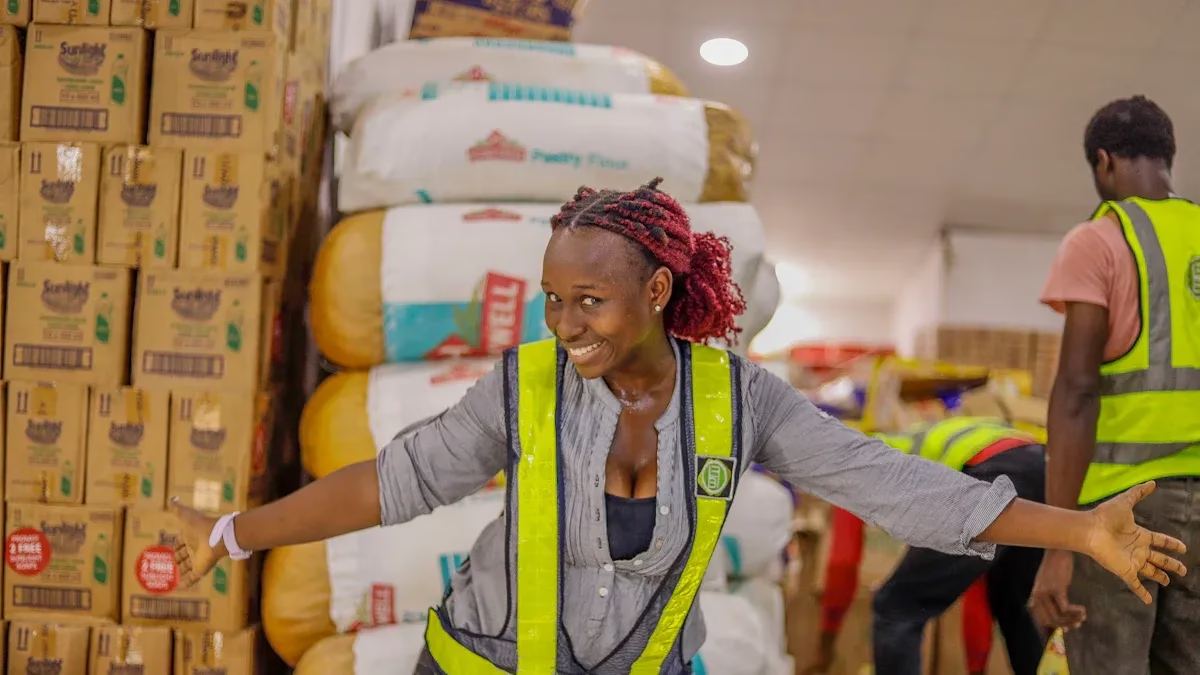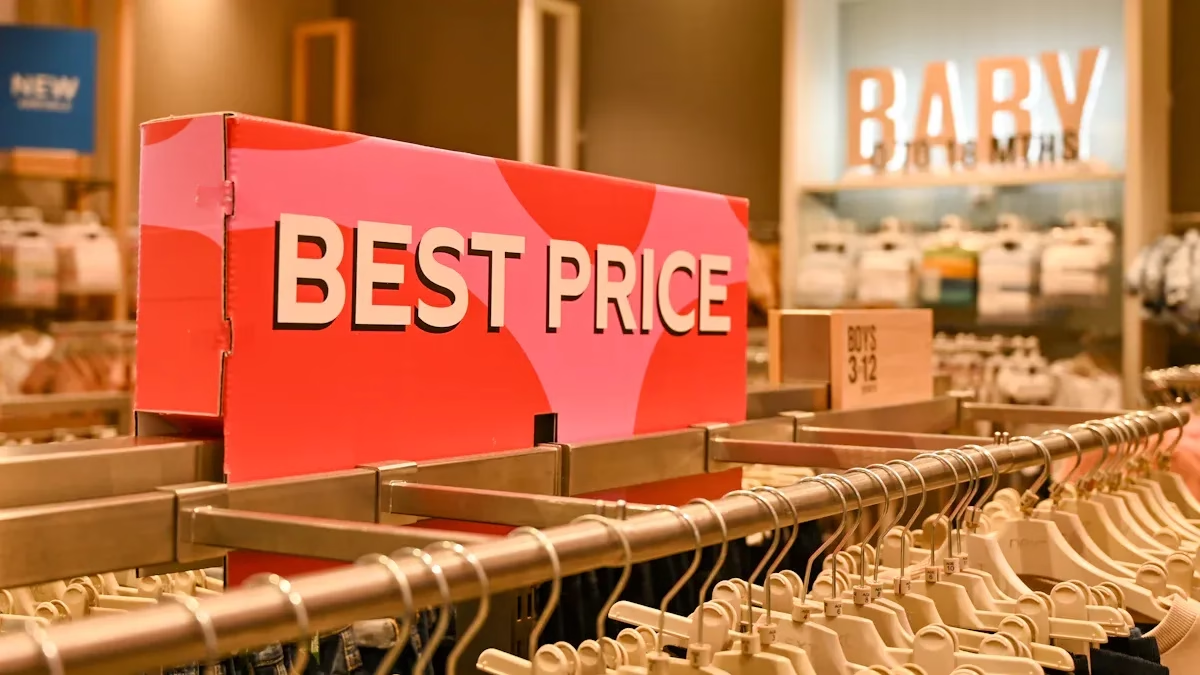Calculating the True Cost of Goods When Sourcing Children’s Clothing

You must know the real cost when sourcing children’s clothing. The real cost includes all money spent from making to shipping. This helps you choose the best price and make more money.
Companies that do this well usually achieve profit margins near 47%.
Understanding these costs helps your business stay healthy.
Punti di forza
Contenuti
Know every cost when buying children’s clothing. This includes materials, labor, shipping, and hidden fees. Knowing these costs helps you set fair prices. It also helps your business stay strong.
Use tools like Garment Costing and Price Calculators. These tools help you track what you spend. They make sure your prices cover all your costs. This keeps your profits safe and helps your business grow.
Check your costs often and change your prices if needed. Knowing your costs helps you avoid problems. It also keeps your customers happy.
Sourcing Children’s Clothing: Key Cost Components

When you start sourcing children’s clothing, you must check every cost. Each piece has costs from making to delivery. Knowing these costs helps you set good prices. It also keeps your business strong. Petelulu is a baby apparel manufacturer. They show you each cost clearly. This helps you control your budget.
Material and Production Costs with Petelulu
Material costs are a big part of the total price. You pay for fabrics, trims, and special features. Most children’s clothing has material costs at 30% to 40% of the retail price. If you want organic or certified materials, the cost goes up. You get better quality and safety with these materials.
Petelulu uses a “Fiber to Finished Product” method. You control every step, from picking GOTS-certified cotton to the last stitch. You save money when you order more. This is called economies of scale. Petelulu uses advanced machines and makes clothes in bulk. This helps you save money and keep quality high.
Here is a table that lists the main cost parts in sourcing garments:
Componente di costo | Descrizione |
|---|---|
Material Costs | The base cost of fabrics, which can change based on quality and certifications like GOTS. |
Customization Complexity | Extra costs for custom designs, logos, and labels. |
Labor Costs | The cost of workers who make the clothes. |
Shipping and Logistics | The cost to move goods from the factory to your door. |
Volume Discounts | Lower prices per unit when you order more. |
Termini di pagamento | Flexible payment options can help you manage cash flow. |
Petelulu gives you a clear cost structure. You see what you pay for: materials, labor, overhead, and setup. This helps you make smart choices when sourcing garments.
Shipping, Logistics, and Duties
Getting products from the factory to your store adds more costs. You pay for shipping, customs, and extra fees. The price depends on how much you ship and how fast you need it.
You also pay import duties. These can be 10.2% to 32% of the garment cost. Other fees include harbor maintenance, customs bonds, and examination fees. These costs add up. You must include them when sourcing children’s clothing.
Hidden Fees and Overhead
Some costs are easy to miss when sourcing garments. You must plan for employee expenses, rent, insurance, and marketing. These overhead costs can take up 15% to 20% of your budget. Rent for a retail or storage space averages $3,500 per month. Insurance protects your business and usually costs 0.5% to 1% of your total revenue.
You also pay for licenses, compliance testing, and audits. Testing for safety and labeling costs $350 to $550 per style. These steps are important. Children’s clothing must meet strict safety rules. Petelulu holds certifications like OEKO-TEX, GOTS, and CPSIA. These show your products are safe and made with care.
Nome della certificazione | Descrizione |
|---|---|
OEKO-TEX | Ensures clothing is free from harmful chemicals. |
Commercio equo e solidale | Guarantees fair wages and safe working conditions. |
Corporazione B | Shows commitment to social and environmental responsibility. |
Standard globale del tessile biologico (GOTS) | Confirms use of organic materials and eco-friendly methods. |
OEKO-TEX Standard 100 | Tests for harmful substances in textiles. |
Suggerimento: Always include quality control and compliance fees in your budget. These costs protect your brand and help you sell in more markets.
When you know all these key cost parts, you make better choices. You keep your business safe, your prices fair, and your customers happy.
Calculating True Landed Cost and Pricing

Formula for True Landed Cost
You must know the true landed cost before setting prices. This cost is every dollar spent to get products from the factory to your warehouse. If you miss a step, you might lose money. Here is an easy way to find the true landed cost for each item:
Write down all supply costs. This means manufacturing, shipping, insurance, import duties, warehousing, and other fees.
Add all these costs together. For example, if you buy 100 baby shirts, and manufacturing is $4 per shirt, shipping is $150, warehousing is $50, and import duty is 10%, your total cost is $640.
Divide the total cost by the number of shirts. In this case, $640 divided by 100 shirts is $6.40 for each shirt.
You can use this formula for any product:
True Landed Cost per Unit = (COGS + Shipping + Customs + Storage + Handling) ÷ Number of Units
Always include every supply cost, even small ones like samples, inspections, or agent fees. Leaving out costs can hurt your profit.
Pricing Strategies for Children’s Clothing Business
You want your business to make money and grow. To do this, you need a good pricing plan. Start by knowing your total cost for each item. This means you must know all supply costs, like materials, labor, overhead, and shipping.
Next, pick your profit margin. Many brands choose a margin that covers all costs and helps them grow. For example, if your total cost per shirt is $6.40 and you want a 50% margin, you would set your price at $12.80.
You can use different ways to set prices:
Cost-plus pricing: Add a set percent to your total cost.
Value-based pricing: Set your price by what customers think your product is worth.
Competitor analysis: Check what other brands charge for similar items.
Promotions: Give discounts or bundles to get more buyers.
If you sell handmade clothing, prices can be higher because it takes more time and care. Always check your supply costs and change your prices if needed. You can use tools like a Garment Costing Calculator or a Garment Price Calculator to help you set prices. These tools help you see if your prices cover all costs and meet your goals.
Tool Name | Descrizione |
|---|---|
Garment Costing Calculator | Finds total production costs, including materials, labor, and profit margins. |
Garment Price Calculator | Estimates wholesale and retail prices, sample costs, and bulk production costs. |
Apparel & T-shirt production cost calculator | Helps you find the best way to make products by looking at all supply costs. |
Petelulu helps you save money by cutting out middlemen. You get direct updates and clear messages at every step. This makes it easier to run your business and keep your prices right.
Common Pitfalls in Cost Calculation
Many people make mistakes when they figure out costs for a children’s clothing business. You can avoid these problems if you know what to look for:
Some forget hidden supply costs like middlemen fees, which can make your total cost higher.
Others skip quality control costs. This can make customers unhappy and cause more returns.
Many guess wrong about how long production takes. Delays can leave you with empty shelves.
Some miss costs like customs duties, banking fees, or packaging. These can lower your profit.
Beginners often forget small things like trims, labels, or inspection fees.
Suggerimento: Always check your supply costs and total cost before you set prices. Use a checklist to make sure you include every cost, from raw materials to shipping and compliance testing.
When you work with Petelulu, you get updates and clear messages. This helps you spot extra supply costs early and keeps your business running well.
Cost of Starting a Children’s Clothing Business
Initial Inventory and Setup Costs
You need to think ahead when starting a children’s clothing business. The cost depends on what you pick for inventory, branding, and setup. Most new brands spend a lot on first inventory, design, and production setup. If you work with Petelulu, you can order in bulk. This lowers the price for each item.
Remember to plan for marketing and branding. These help you find new customers and grow your brand. You also need to pay for rent and utilities. These keep your business running.
Budgeting for Growth and Customization
As your business gets bigger, you need money for new designs and more production. You can pick print-on-demand or inventory-based models. Print-on-demand lets you sell custom designs without keeping lots of stock. Inventory-based models need more money at first but can make more profit.
Try these tips to manage growth:
Set prices that cover all your costs.
Use tools to track your stock and orders.
Check your products to keep quality good.
Teach your team to follow quality rules.
Store clothes the right way to protect them.
When you order more, your costs can change. For example, buying 100 pieces may cost $15 each. Buying 1,000 pieces can lower the price to $9 each. Planning for quality and smart production helps you save money and grow faster.
Suggerimento: Make clear goals for your business. Use tools to find what you do well and fix problems. This will help you do better in the children’s clothing market.
You must know every cost to set the right price and keep your business strong.
Track all expenses, including shipping, duties, and safety checks.
Review costs often and use tools to manage them.
“Petelulu’s direct pricing and strict quality control help you save money and focus on growth.”
FAQ
How do you calculate the true cost for children’s clothing?
You add up all costs for materials, labor, shipping, duties, and overhead. This helps you see the real price for each item you sell for children.
What makes children’s clothing cost more than adult clothing?
You pay more for safety checks, soft fabrics, and special designs. Children need safe, gentle clothes. These extra steps raise the cost for children’s clothing.
How to charge fairly for children’s clothing?
You set prices by knowing your total cost and adding a fair profit. This helps you charge fairly and keeps your business strong when selling to children.